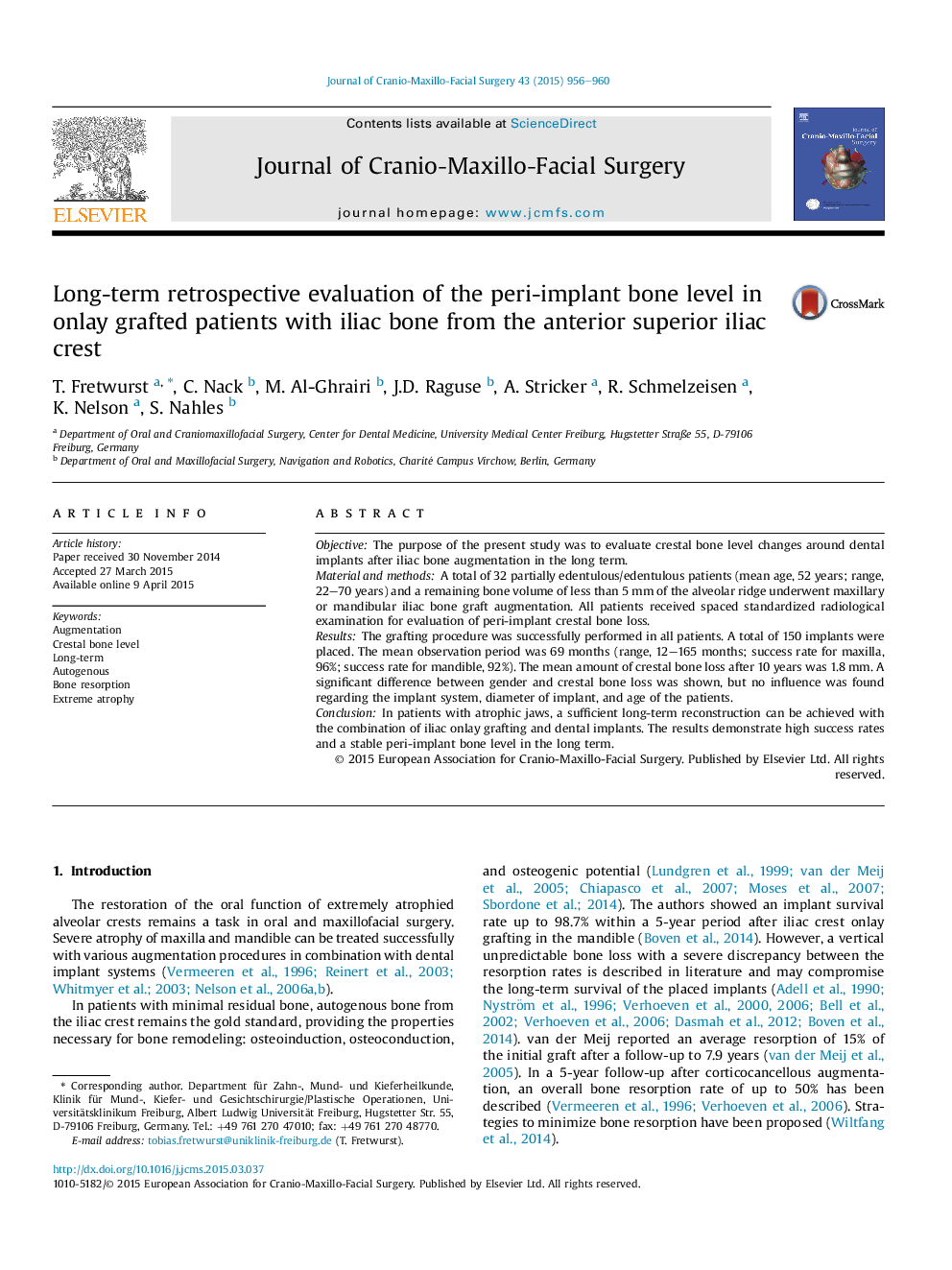| Article ID | Journal | Published Year | Pages | File Type |
|---|---|---|---|---|
| 3142319 | Journal of Cranio-Maxillofacial Surgery | 2015 | 5 Pages |
ObjectiveThe purpose of the present study was to evaluate crestal bone level changes around dental implants after iliac bone augmentation in the long term.Material and methodsA total of 32 partially edentulous/edentulous patients (mean age, 52 years; range, 22–70 years) and a remaining bone volume of less than 5 mm of the alveolar ridge underwent maxillary or mandibular iliac bone graft augmentation. All patients received spaced standardized radiological examination for evaluation of peri-implant crestal bone loss.ResultsThe grafting procedure was successfully performed in all patients. A total of 150 implants were placed. The mean observation period was 69 months (range, 12–165 months; success rate for maxilla, 96%; success rate for mandible, 92%). The mean amount of crestal bone loss after 10 years was 1.8 mm. A significant difference between gender and crestal bone loss was shown, but no influence was found regarding the implant system, diameter of implant, and age of the patients.ConclusionIn patients with atrophic jaws, a sufficient long-term reconstruction can be achieved with the combination of iliac onlay grafting and dental implants. The results demonstrate high success rates and a stable peri-implant bone level in the long term.
